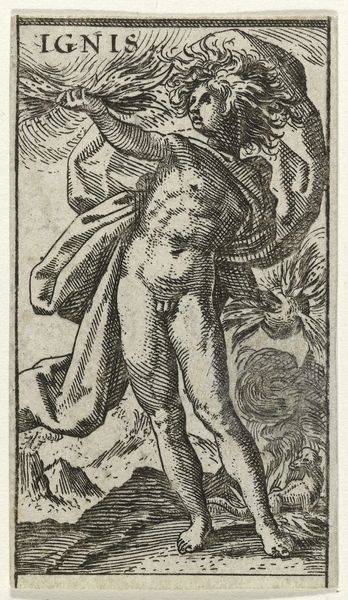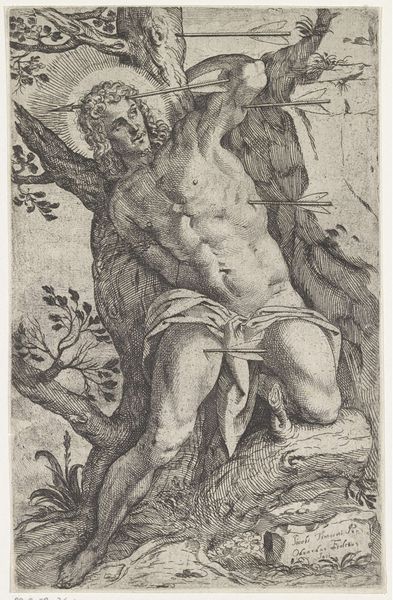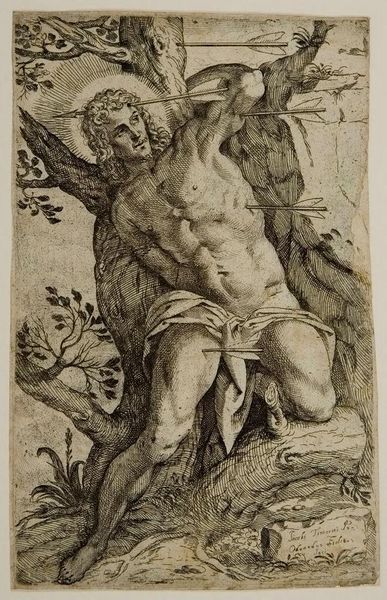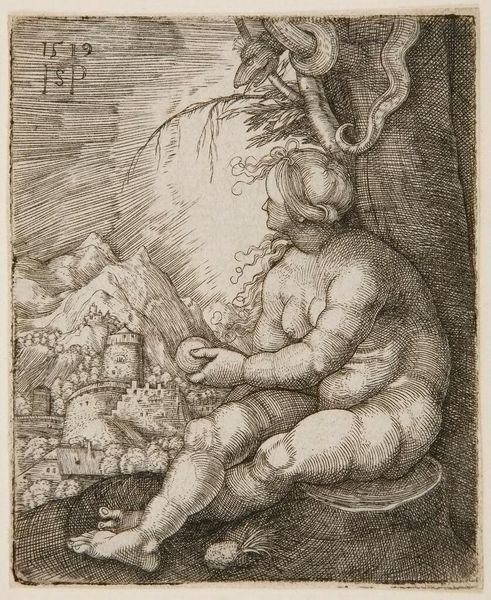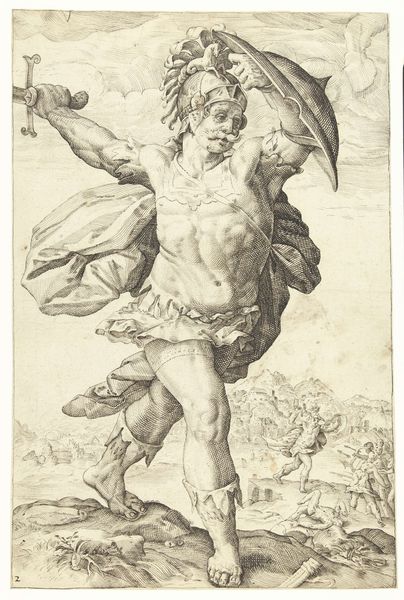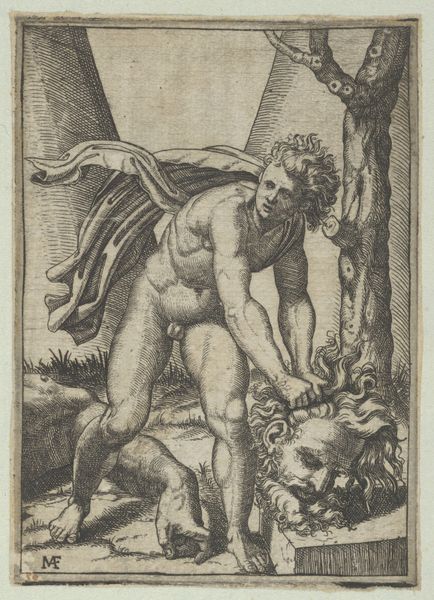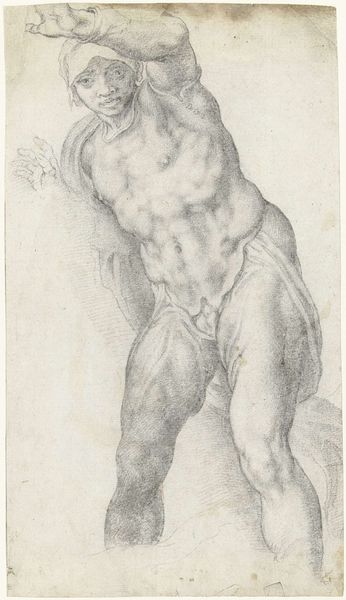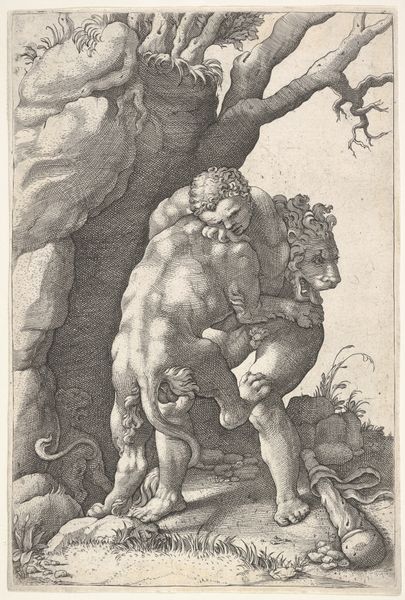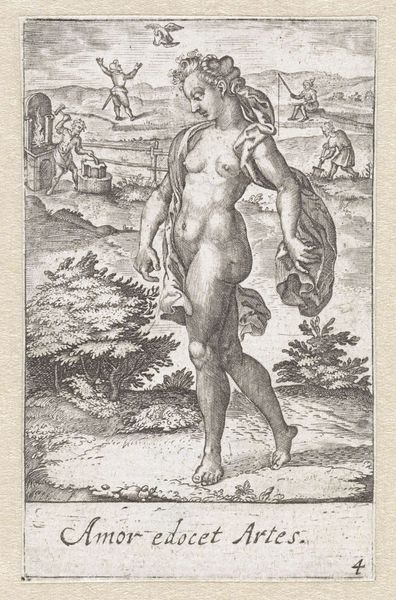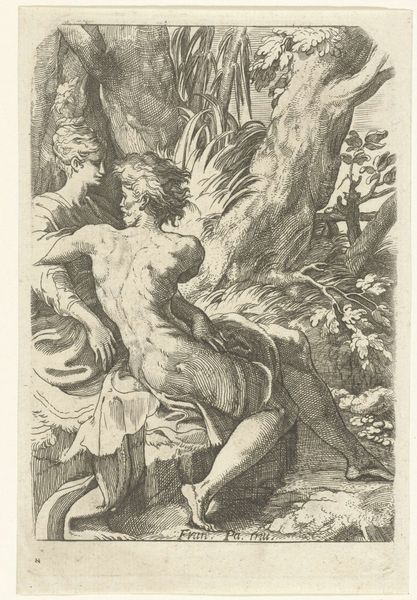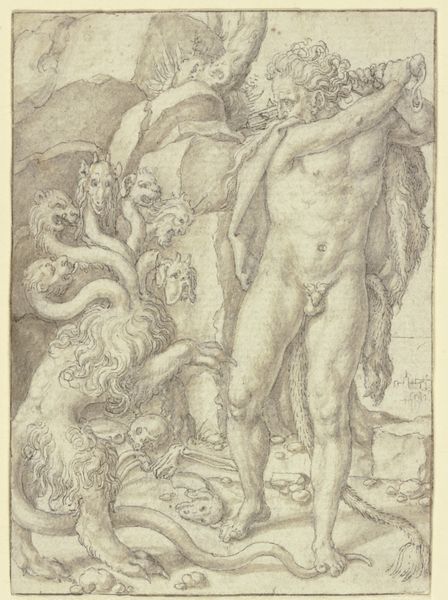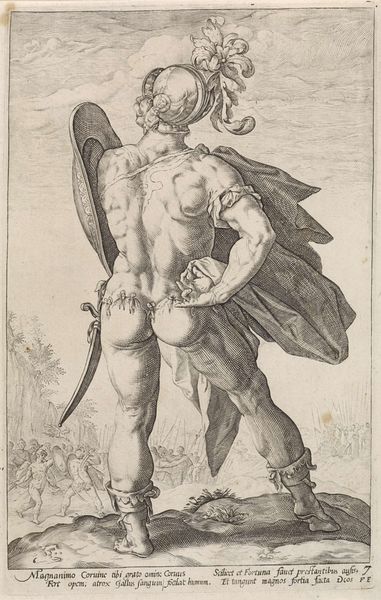
print, engraving
#
allegory
# print
#
old engraving style
#
figuration
#
form
#
11_renaissance
#
line
#
northern-renaissance
#
nude
#
engraving
Dimensions: height 120 mm, width 79 mm
Copyright: Rijks Museum: Open Domain
Sebald Beham made this print, "Nemesis," around 1520, using the intaglio technique of engraving. The process begins with a metal plate, usually copper, into which the artist carefully cuts a design. Ink is then forced into these lines, and the surface is wiped clean. When paper is pressed against the plate, the ink transfers, creating the image. The very precision of the engraved line is critical here. Beham uses it to create a forceful image, down to the patterned helmet on the figure's head. This level of detail would have required immense skill and time. Interestingly, printmaking during the Renaissance was tied to social and political change. It democratized images, making them accessible to a wider audience beyond the elite. This allowed for new ideas to circulate, challenging old hierarchies. So, while "Nemesis" is a work of skilled artistry, it also participates in a much broader cultural shift. It reminds us that art, like any form of making, is always connected to the world around it.
Comments
No comments
Be the first to comment and join the conversation on the ultimate creative platform.
